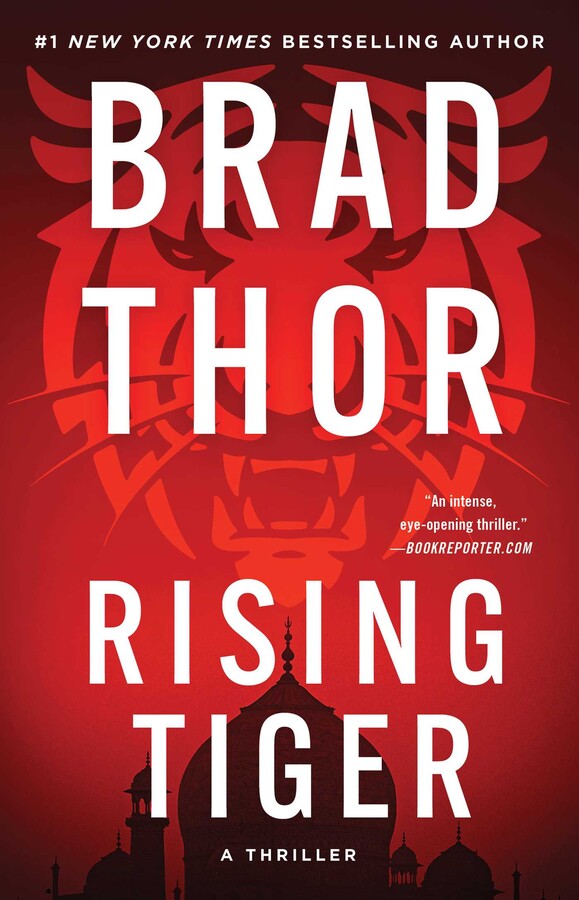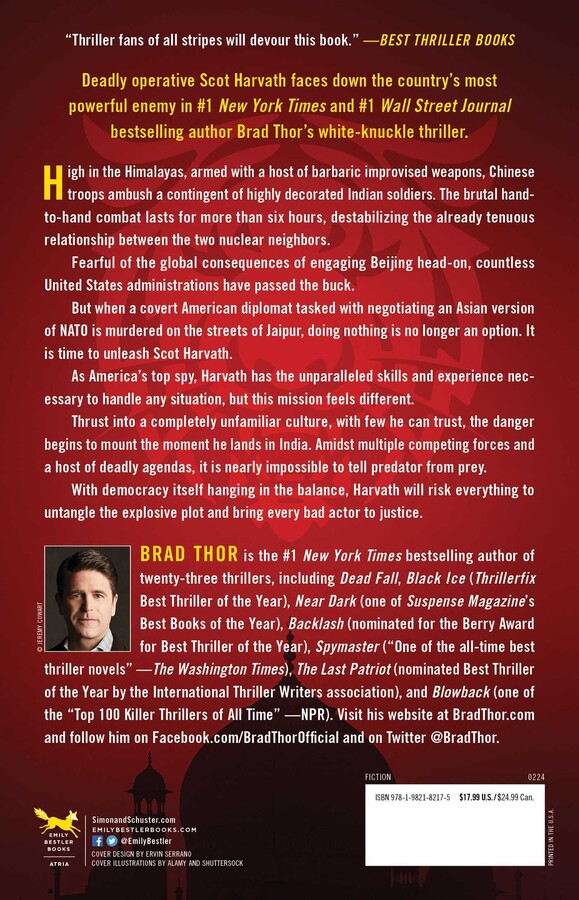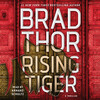Plus get our latest book recommendations, author news, and competitions right to your inbox.
Table of Contents
About The Book
#1 WALL STREET JOURNAL BESTSELLER
Deadly operative Scot Harvath faces down democracy’s most powerful enemy in #1 New York Times and #1 Wall Street Journal bestselling author Brad Thor’s white-knuckle thriller.
High in the Himalayas, armed with a host of barbaric, improvised weapons, Chinese troops ambush a contingent of highly decorated Indian soldiers. The brutal, hand-to-hand combat lasts for over six hours, destabilizing the already tenuous relationship between the two nuclear neighbors.
Fearful of the global consequences of engaging Beijing head-on, countless United States administrations have passed the buck. But when a covert American diplomat tasked with negotiating an Asian version of NATO is murdered on the streets of Jaipur, doing nothing is no longer an option. It is time to unleash Scot Harvath.
Thrust into a completely unfamiliar culture, with few he can trust, the danger begins to mount the moment Harvath lands in India. Amidst multiple competing forces and a host of deadly agendas, it is nearly impossible to tell predator from prey. With democracy itself hanging in the balance, Harvath will risk everything to untangle the explosive plot and bring every bad actor to justice.
Excerpt
GALWAN VALLEY, WESTERN HIMALAYAS
The battle had been barbaric. Forbidden from using firearms in the disputed border region, the Chinese soldiers had crept across the “Line of Actual Control” in the middle of the night armed with spike-studded bats and iron rods wrapped with concertina wire. The brutal, medieval-style hand-to-hand combat had lasted more than six hours.
In the early light of dawn, a bitterly cold wind—like the breath of death itself—blew down the steep valley from the glaciers above. Bodies lay everywhere. The jagged stones along the banks of the chalky blue Galwan River were covered in blood.
Despite China’s gruesome surprise attack, the Ladakh Scouts had courageously charged into the fight. Known as the “Snow Warriors,” they were one of the Indian Army’s toughest, most fearsome, and most decorated regiments. They had only one primary objective—to guard against the Chinese invading India via this section of the Himalayas.
The Snow Warriors had succeeded in their mission, but their success had come at a devastating cost. Twenty Indian soldiers had been killed and almost twice as many Chinese. Amid escalating tension between the two nations, it had been one of their deadliest altercations yet. And once more, China had been the aggressor. The reason for the aggression, at least to those paying attention, was obvious.
Dramatically unpopular among its people and facing a myriad of social and economic problems, the Chinese Communist Party was weaker than it had ever been.
The CCP’s grip on power was increasingly tenuous. The panic of its members was palpable. Many in the party believed they were only one Tiananmen Square away from full-blown revolution. It was why they had crushed the prodemocracy movement in Hong Kong and why they continued to flex their military muscle over Taiwan. One more crack in their hull, one more leak in their sagging, waterlogged boat, and the CCP would slip beneath the surface of the waves and be dragged violently down to its death.
To prop up the party and prevent such a demise, Beijing needed to fog the minds of its people—to convince them that they were locked in an existential struggle, that the world was out to destroy China.
The course of action they decided to adopt was a form of virulent nationalism—the likes of which hadn’t been seen since the Italian Fascism and German National Socialism of the 1930s.
For their plan to take root and grow, Beijing needed bogeymen—both big and small, near and far. The United States and its Western allies were a natural fit. Another exceptional contender, however, lay right at China’s doorstep. India.
As the world’s largest democracy, not only were India’s ideas a threat, but so too were its growing economy, increasing military, and deepening ties with the United States. The CCP feared India’s burgeoning power and was willing to do whatever necessary to diminish it.
Coercive statecraft to drive wedges between India and its neighbors, bloody cross-border raids to capture and hold disputed territory—China was feeling weak, and that weakness made them dangerous. Anything and everything was on the table—including the most contemptible and horrific acts of aggression.
The Snow Warriors’ commander, Major Shaukat Banu, was a tall, sinewy man with a thick mustache. As he surveyed the carnage, his skin was still inflamed and sensitive to the touch. The weapon the Chinese had unleashed was unlike anything he had ever experienced.
At the end of the battle, when it had become obvious that they were going to lose, the Chinese had called their soldiers into retreat, and had activated some sort of directed-energy device.
The weapon had heated up the water molecules beneath the Indian soldiers’ skin, causing them to vomit and experience excruciating pain. The Ladakh Scouts had been left with no choice but to abandon any pursuit of the Chinese and to pull back out of the range of the weapon.
With their retreat secure, the Chinese had fled, leaving their comrades to the mercy of the Indian Army. Banu directed two of his medical officers to attend to any of the enemy in need of care. Despite the brutality shown by the Chinese, it was the honorable thing to do and, at his core, Major Shaukat Banu was first and foremost an honorable man.
Both in his training from the Indian Army and as a guest of the United States military, he had been schooled in battlefield tactics and ethics.
The Snow Warriors had cross-trained with some of the United States’ best high-altitude, cold-weather experts, including the U.S. Army’s Tenth Mountain Division, the Marine Corps Mountain Warfare Training Center, and the Naval Special Warfare Cold Weather Detachment.
Those men, like Banu, who had proven themselves exceptionally distinguished had been invited to further participate in special hand-to-hand training normally available only to America’s most elite operators. The major credited the edged-weapons portion of the program not only for the reason he was still standing, but also for why he had been able to slay so many Chinese.
On the left side of the belt encircling his bloodstained uniform hung an American-made tomahawk popular with the U.S. Navy SEALs. On the right hung a custom, hand-forged knife carried by many of America’s Delta Force operatives. Banu had been taught how to wield both, simultaneously—how to cut, and thrust, and strike his way through the enemy, which was exactly what he had done.
Eleven of the Chinese casualties had been at his hands. But as proficient as his skills had proven to be, they hadn’t been enough to prevent the slaughter and injury of so many of his own men. Never had he so heavily felt the burden of command.
But beneath his sense of loss lay something else—a deep sense of foreboding. China had raised the stakes dramatically. It was probing; testing what worked and just how much India would absorb. Once the Chinese had their answer, they would strike again.
And like the cold wind that blew through the valley, the next attack would be more chilling, more deadly, than anything that had come before.
Major Shaukat Banu’s only question was whether India would be able to stop it.
Product Details
- Publisher: Atria/Emily Bestler Books (May 15, 2024)
- Length: 352 pages
- ISBN13: 9781982182175
Browse Related Books
Raves and Reviews
"Brad Thor is the greatest political thriller novelist ever. Trust me, don’t miss this book."
– The Real Book Spy
"RISING TIGER is ripped from tomorrow’s headlines."
– Wharton Journal Spectator
"An intense, eye-opening thriller that is head and shoulders above anything else like it on the market."
– Bookreporter.com
“Un-freaking-believable – It’s now a word in Webster’s because of this book!”
– The Crew Reviews
“Thriller fans of all stripes will devour this book!”
– Best Thriller Books
“An amazing thriller!”
– Fred Burton
"A relentless and riveting page-turner."
– Jon Land's The Thrill List
"A riveting, roller coaster ride unlike any you’ve been on."
– The Epoch Times
Resources and Downloads
High Resolution Images
- Book Cover Image (jpg): Rising Tiger Trade Paperback 9781982182175
- Author Photo (jpg): Brad Thor © Jeremy Cowart(0.1 MB)
Any use of an author photo must include its respective photo credit




















